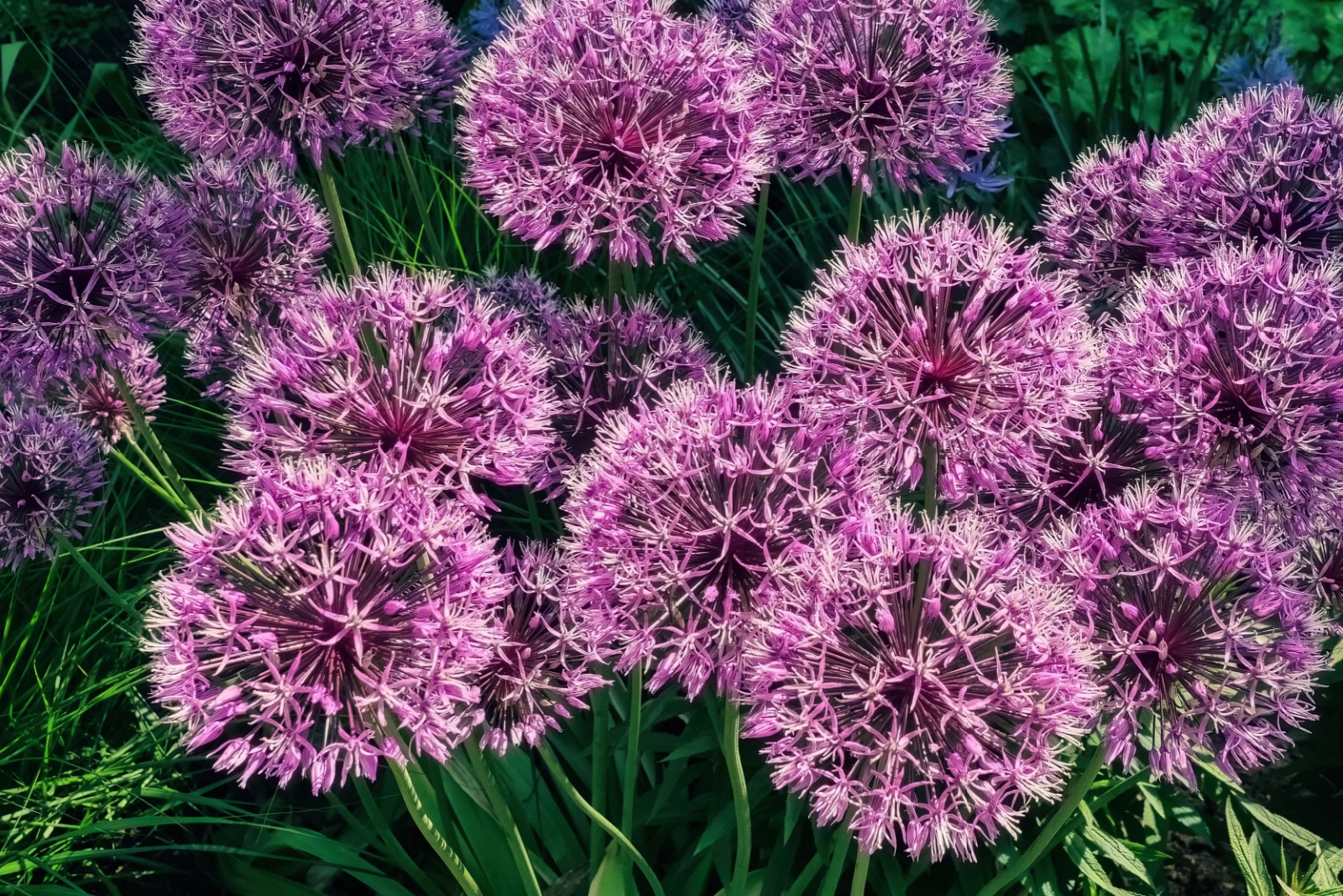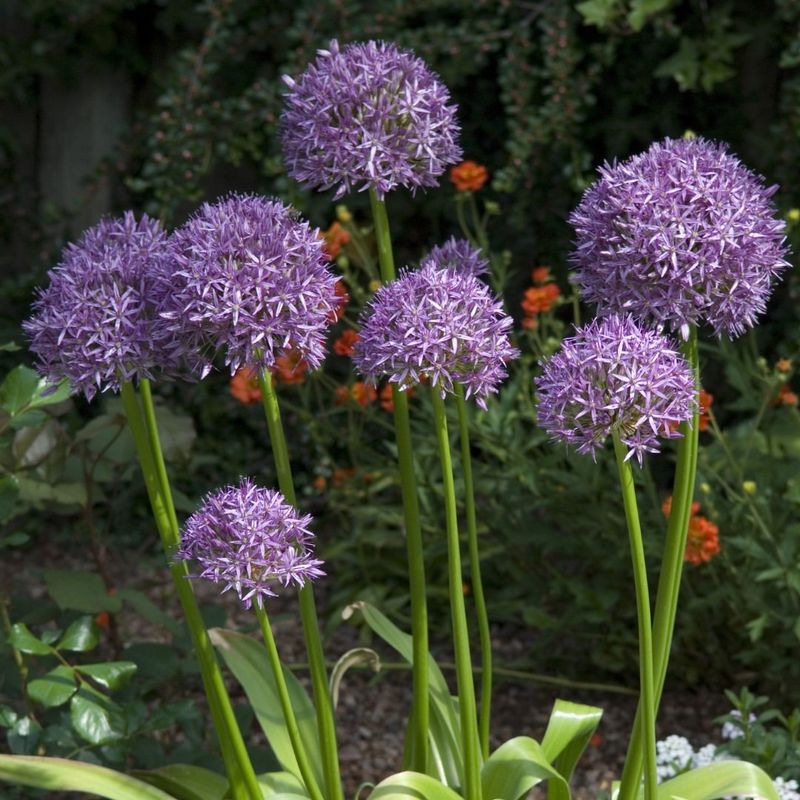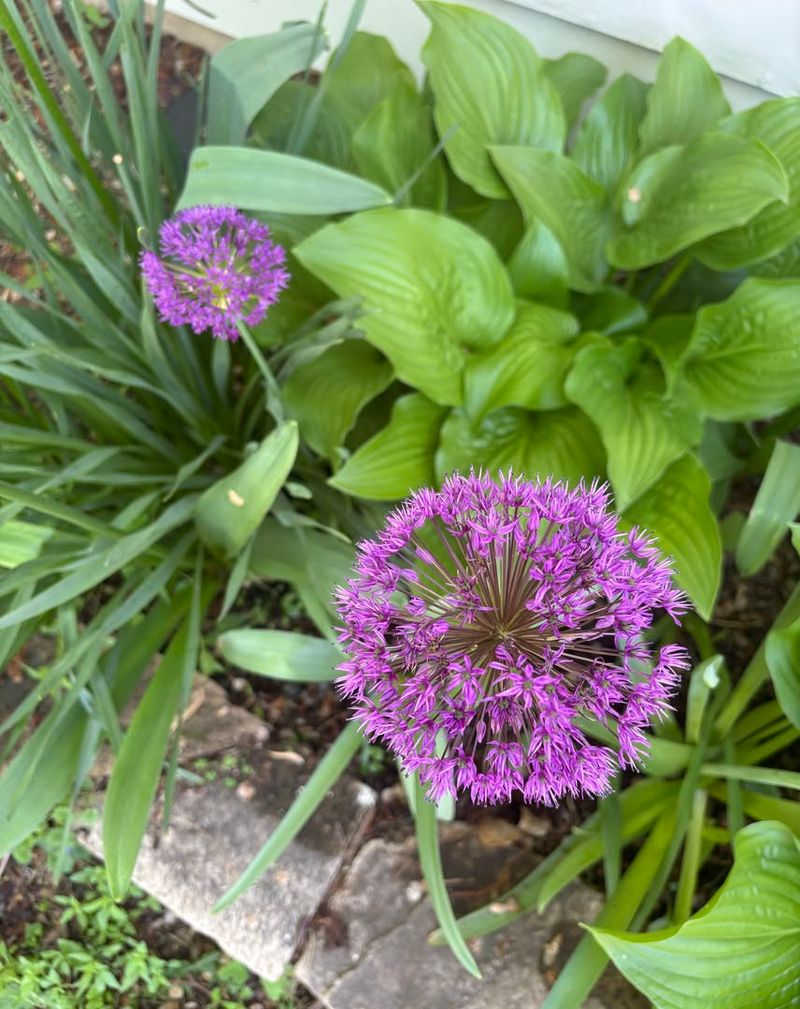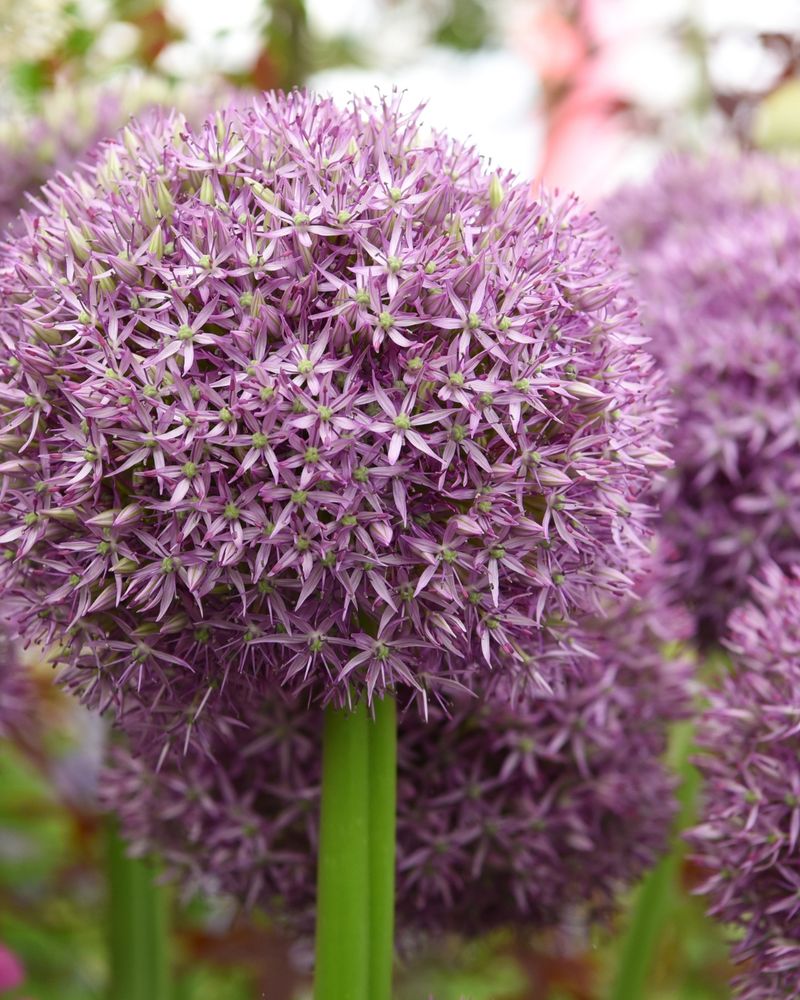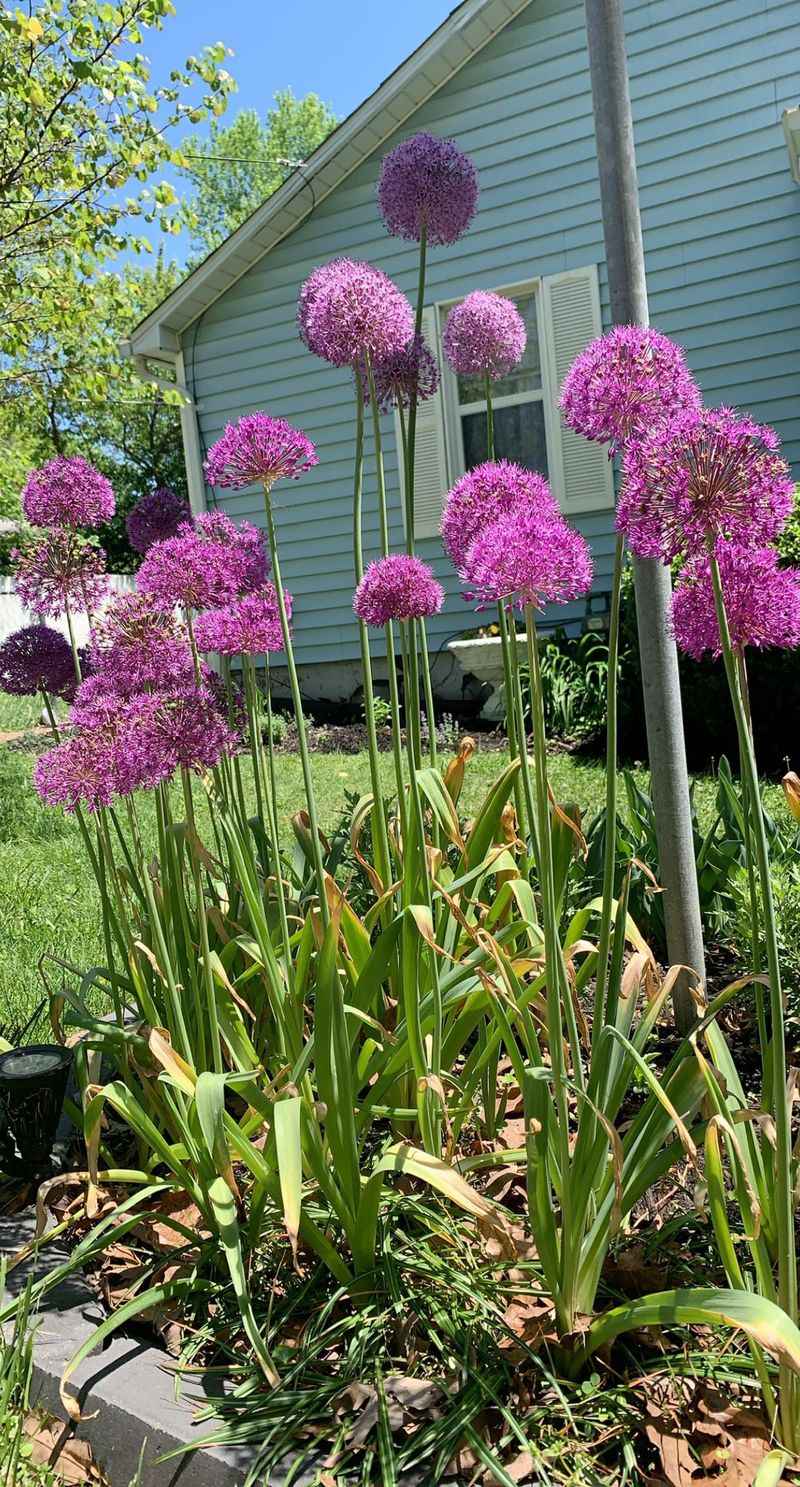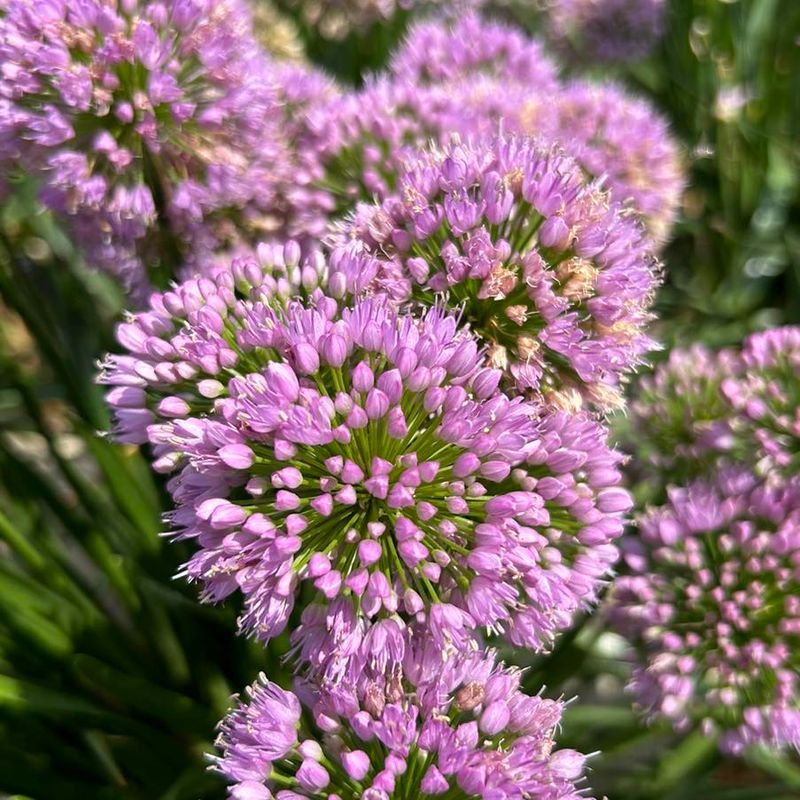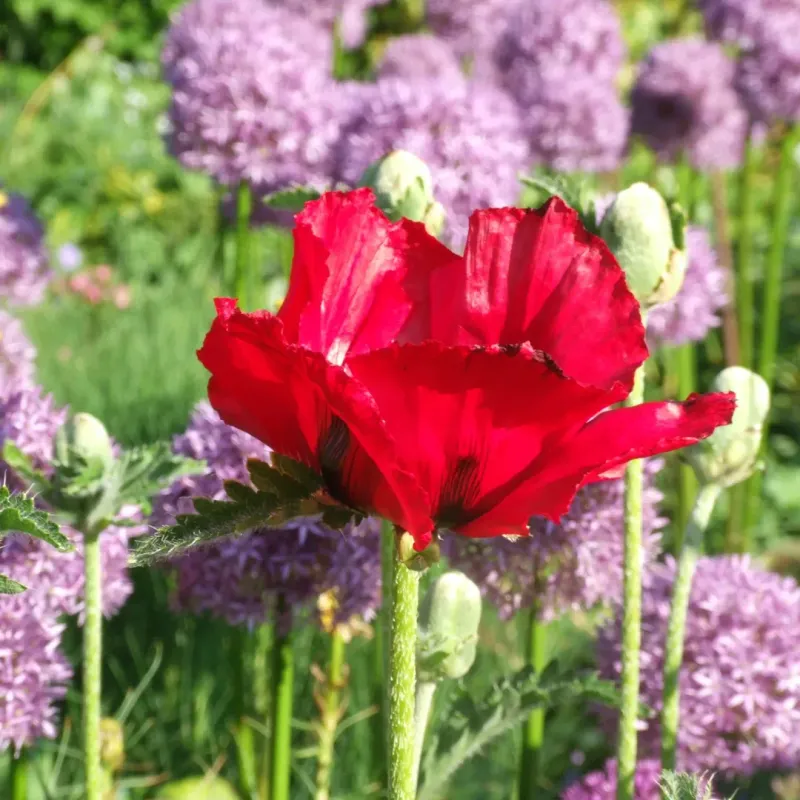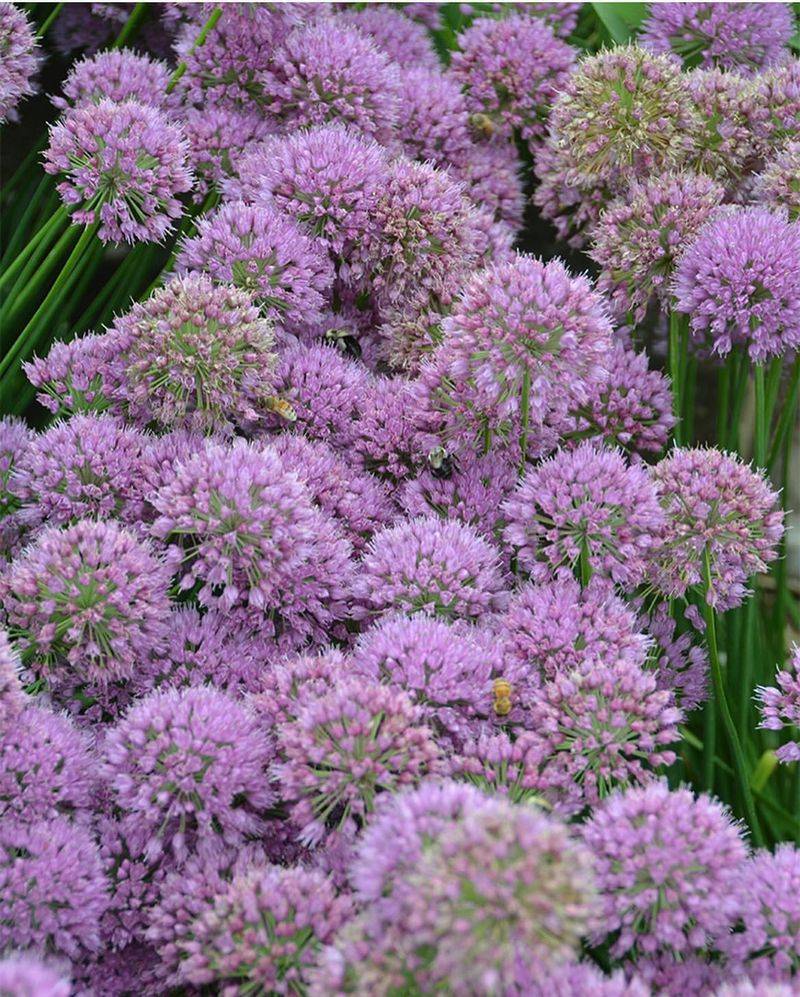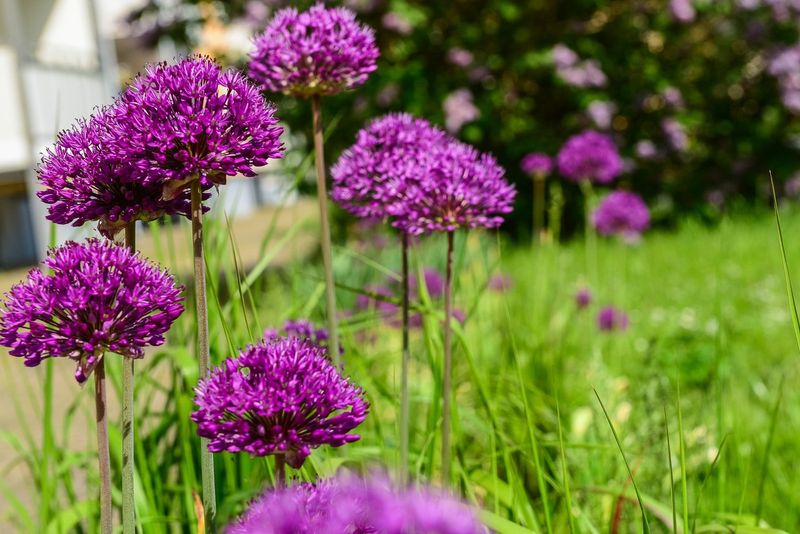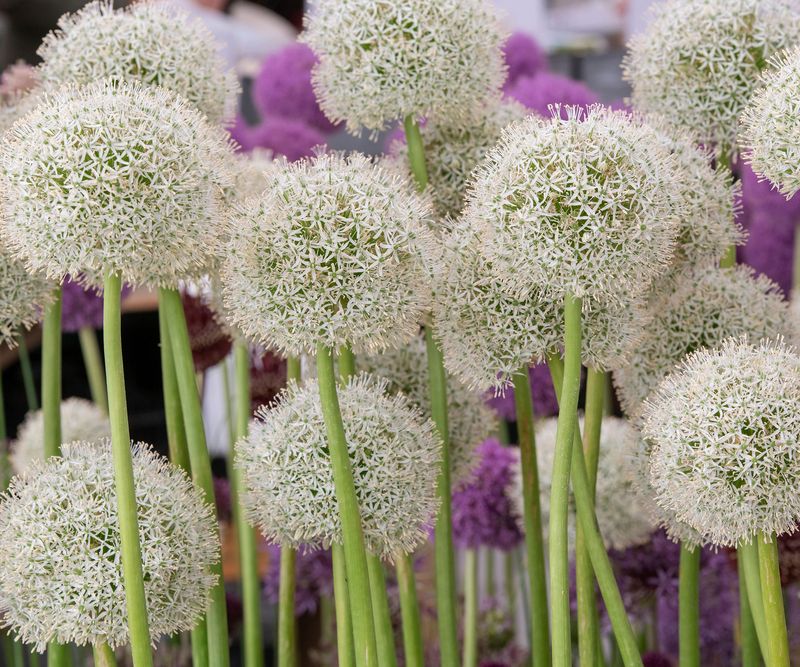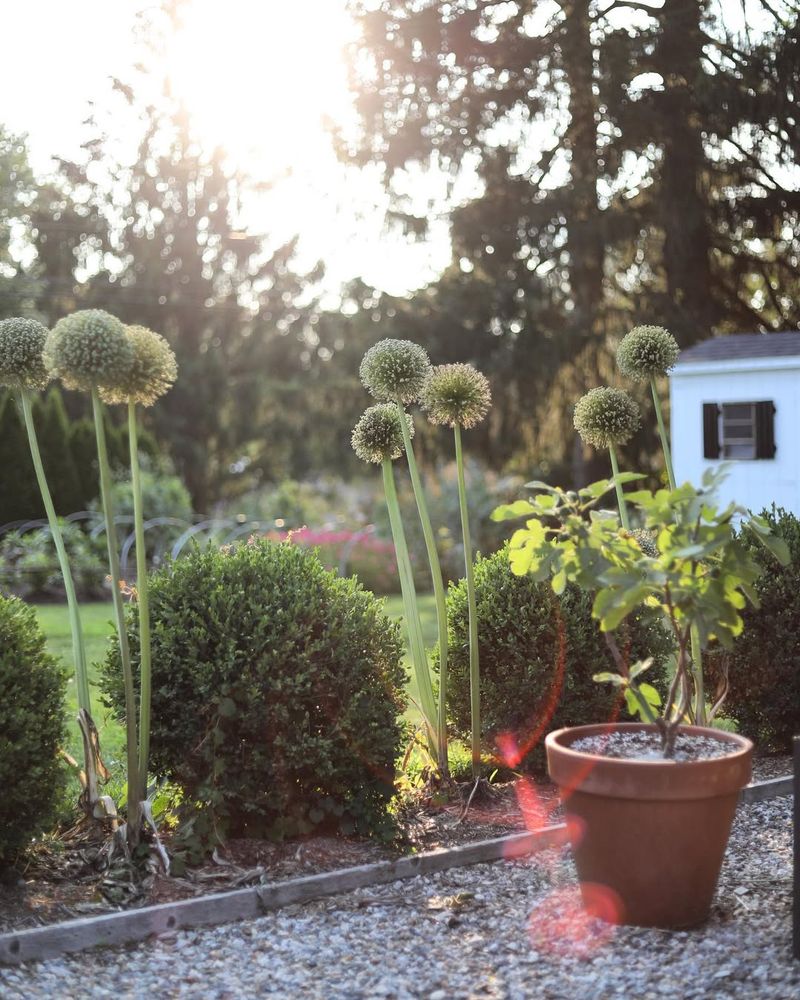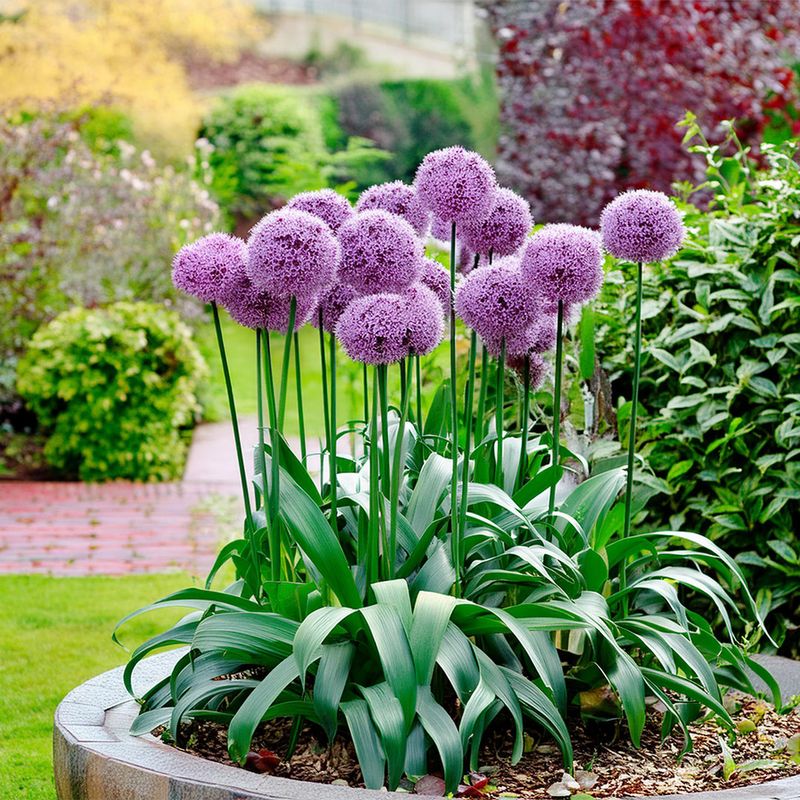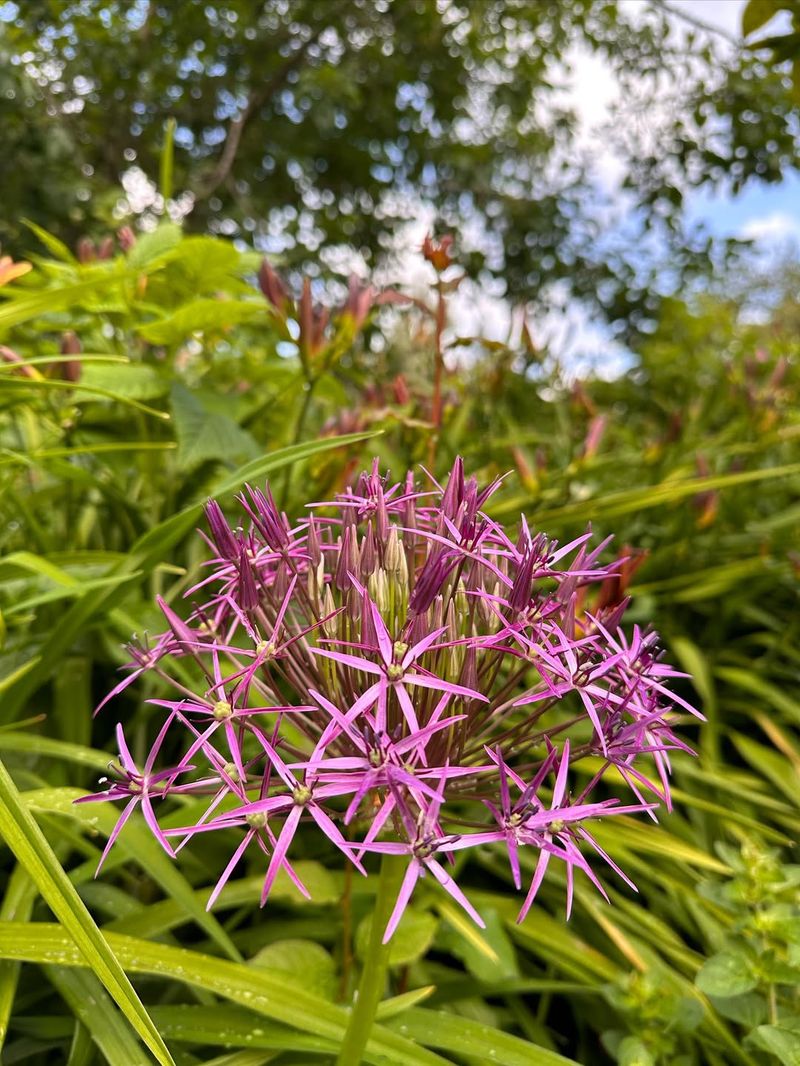Ornamental alliums are some of the most striking flowers you can add to a California garden. These members of the onion family produce perfect spheres of tiny star-shaped blooms that seem to float above the garden on tall, sturdy stems.
Whether you’re gardening along the coast or in drier inland areas, alliums can bring architectural interest and pollinator appeal to your outdoor space.
1. Perfect Timing For Planting
Fall is the sweet spot for planting allium bulbs in California gardens. October through November gives them just enough time to establish roots before winter’s mild chill.
I’ve found that planting too early when soil temperatures remain high can lead to premature sprouting. My neighbor waited until December last year and still got beautiful blooms, but earlier plantings typically produce stronger stems.
2. Sun Requirements Vary By Region
Coastal California gardeners can get away with planting alliums in partial shade, while inland areas demand full sun exposure. The morning sunshine with afternoon protection works best in hot Central Valley locations.
A garden bed that receives at least 6 hours of sunlight typically produces the strongest stems and most vibrant colors. When I moved my allium patch from a semi-shaded spot to my sunniest garden bed, the flower heads nearly doubled in size!
3. Drainage Is Non-Negotiable
California’s clay soils can spell disaster for allium bulbs if not amended properly. Good drainage prevents rotting during our occasional winter downpours.
Working in compost and pumice before planting has saved countless bulbs in my heavy soil garden. A friend in San Diego builds raised mounds for her alliums, which thrive even during unusual rainy seasons.
Consider planting on slopes or in raised beds if your soil tends to hold water for more than a day after rainfall.
4. Water-Wise Wonder Plants
Once established, ornamental alliums need minimal irrigation, making them perfect companions for California’s drought-prone climate. Spring blooming varieties naturally go dormant as summer heat intensifies.
Water deeply but infrequently during active growth phases. My San Bernardino garden alliums thrive with just twice-monthly watering in spring, and almost none in summer after blooming.
Group them with other Mediterranean climate plants for a cohesive water-wise garden design that looks intentional rather than merely drought-tolerant.
5. Deer And Gopher Resistance
California gardeners battling wildlife will appreciate that alliums are naturally resistant to deer, gophers, and most rodents. The same compounds that give onions their distinctive smell deter most garden pests.
Gophers, which plague many California gardens, typically avoid allium bulbs entirely. After losing countless tulips to hungry deer, switching to alliums saved my foothill garden from becoming an expensive wildlife buffet.
Plant them as a protective border around more vulnerable flowers for an attractive and functional garden design.
6. Unexpected Companion Plants
Ornamental alliums create magical combinations when paired with California natives like penstemon and salvias. Their architectural form provides vertical interest among mounding perennials.
Try planting them among low-growing California poppies for a stunning color contrast. The golden orange poppies create a perfect backdrop for the purple allium spheres.
In my coastal garden, alliums emerging through the silver foliage of artemisia create a textural wonderland that looks intentional year-round, even after the flowers fade.
7. Extending Bloom Seasons
Strategic selection of different allium varieties can provide continuous blooms from April through July in California gardens. Early bloomers like Allium aflatunense start the show, while giants like Allium ‘Globemaster’ continue into early summer.
Plant multiple varieties at the same time in fall for a sequence of blooms. Last year, I staggered three types throughout my Berkeley garden and enjoyed almost three months of those distinctive spherical flowers.
Late-blooming ‘Summer Beauty’ can extend the display into August, especially in cooler coastal zones.
8. Size Matters In Garden Design
Allium sizes range dramatically from tiny 8-inch ‘Hair’ varieties to the massive 4-foot ‘Globemaster’ with softball-sized flower heads. Choosing the right scale for your space creates maximum impact.
Small gardens benefit from medium-sized varieties like ‘Purple Sensation’ that won’t overwhelm the space. For my narrow side yard in Sacramento, the smaller varieties created perfect “punctuation marks” without dominating neighboring plants.
Large varieties make stunning focal points in expansive California landscapes where they can be appreciated from a distance.
9. Beyond Purple: Color Diversity
While purple dominates the allium world, California gardeners can explore white, yellow, blue, and even pink varieties. White ‘Mount Everest’ creates elegant contrast in evening gardens that glow at sunset.
Yellow ‘Moly’ brightens woodland garden edges with cheerful blooms that complement California’s golden summer hills. A garden designer friend in Santa Barbara creates stunning monochromatic displays using only white allium varieties against dark green shrubs.
Try mixing colors for a rainbow effect, or stick with one shade for sophisticated impact.
10. Seed Heads: Second Season Of Beauty
Don’t rush to deadhead spent allium blooms! The architectural seed heads provide months of additional interest in California gardens where they dry perfectly in our summer heat.
Spray-painting seed heads copper or gold extends their decorative value through fall. My dried allium heads collected from the garden have lasted for years as indoor arrangements.
Allow some to self-seed naturally for free plants, though offspring of hybrid varieties may differ from parents. The volunteer alliums that appeared in my Sonoma garden have become some of my favorite specimens.
11. Container Growing Success
Alliums perform beautifully in containers, perfect for California patios and small spaces. Choose deep pots (at least 12 inches) with excellent drainage holes to accommodate their root systems.
Terra cotta pots work exceptionally well in our climate as they allow excess moisture to evaporate. For my apartment balcony in San Francisco, I planted several ‘Purple Sensation’ bulbs in a single large pot with lavender for a stunning spring-to-summer display.
Remember that potted bulbs may need more frequent watering than garden-planted ones.
12. Microclimates Matter
California’s diverse microclimates affect which allium varieties will thrive in your specific location. Coastal gardens can support more tender varieties that inland heat might stress.
Low-chill varieties perform better in Southern California’s mild winters. After moving from the Bay Area to Palm Springs, I had to switch to heat-tolerant varieties like A. cristophii that can handle intense desert conditions.
Check with local nurseries or master gardener programs for region-specific recommendations tailored to your particular California microclimate.

